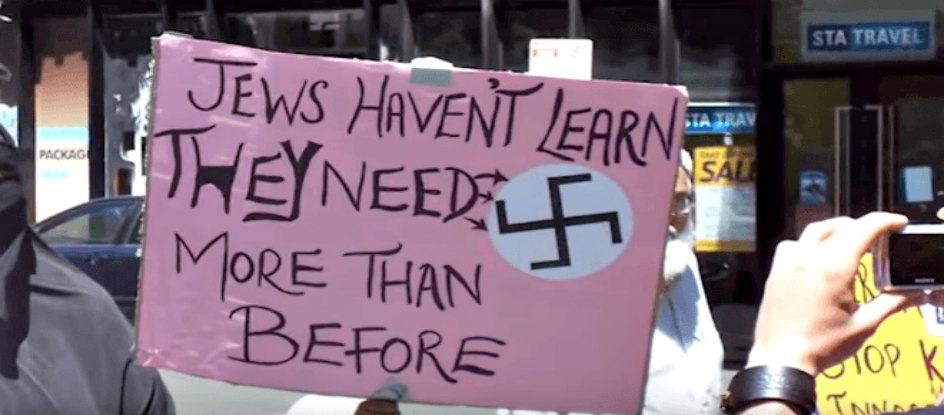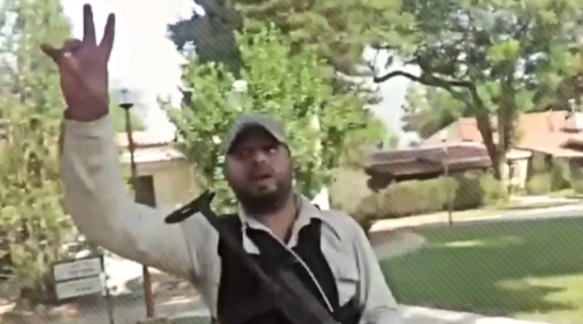While Jewish communities gather in conferences on Antisemitism, repeating much of the same facts, the haters of Jews and Israel are making this hatred fun, sexy and intriguing.

Delving into the academic review of Antisemitism, one can easily encounter a possible discrepancy in the current practices: mainly, does the scope of events as we see them in the academic or analytic fields effectively represent the way Jews feel today as individuals, as communities, around the world?
As the analysis of past vs. present continues, we must question: Is it possible that the concern and anxiety of the Jews in the social realms is insufficiently reflected in the academic studies, Pew reports and reporting analytics? Is it possible that these numbers lack accuracy because of the increased tendency to disregard, ignore or be apathetic to instances of Antisemitism because of the prevalent reality that very little will ever come of complaining or reporting it?
Conclusions regarding Antisemitism are often derived from within, or rather, in comparison with other disciplines focused on those deprived of rights in sections of society – as another way of looking at post-colonial, post-modernist impact.
Often Antisemitism is expressed alongside anti-Zionism by scholars for whom Antisemitism is not the major issue, and in fact is disregarded, as is the deprivation of rights of the Jewish People.
The resulting value judgments of the situation are based solely on black and white analysis, with little room for accuracy, and certainly no empathy for the Jewish experience that preceded and could teach about the deprivation of civil and human rights that are so prominent in the social discussions of today.
In a symposium hosted recently in Tel Aviv by NGO Monitor and the World Jewish Congress – which brought together academics from both Israeli and American institutions of learning to address the Oldest Hatred Gone Viral – Professor Dina Porat emphasized that “we must take it in proportion and avoid comparison with the 1930s.”
She emphasized that the main difference was that Jews who lived in that time had no idea what awaited in the next decade. However, the pogroms of earlier decades were not unknown. One must only read Bialik’s City of Slaughter to know the extent of the depravity involved in the massacre of Jews in 1903 – which one could easily read and believe it was written about the destruction of the Holocaust 40 years later. But no, social Jew-hatred has been a part of life that Jews continuously brushed aside with the sentiment that “This, too, we will survive. This, too, shall pass. This, too, we shall outlast.”
Has this reaction to Jew-hatred positioned us for the same response in the face of the new waves of Antisemitism we face today? Moreover, have we become, indeed, so used to the random upheavals that we cannot effectively respond as a collective? And has our collective become so weakened by disagreement over ideologies, philosophies and practice that we cannot even unite in our response when the ancient dragon of hate against Jews rears its ugly head even in the most “civil” of societies?
The violent expressions of Antisemitism might have been reduced to some extent, but the social, verbal, and rhetorical have increased. There is no one form, medium, or style of expression of the vitriol of hatred – against Israel, against Zionism, against Jews, Jewish history, Jewish nationalism, Jewish rights.
In highlighting the polarization of what is Antisemitism, how it should be defined, who it includes and how the results of any study should be applied, Professor Alvin Rosenfeld emphasized in the conference that the study of Antisemitism as its own history, rhetoric, passions doesn’t imply that it bears no resemblance to forms of racism and prejudice that have existed over time and related to other peoples.
Professor Menachem Rosensaft stated that he is just as concerned by neo-Nazis and white supremacists as by calls from the left for destruction of the Jewish state or delegitimizing our national and ancestral rights. However, he emphasized that minimizing the bigotry from either side will only result in a continued deterioration of consideration of Antisemitism as the longest and oldest hatred which is deserving of study on its own term. He disregards claims that Antisemitism is worse or more pernicious. Thus he believes there is a “collective Jewish obligation” to decentralize the fight against Antisemitism and to, instead, redirect our energies to fight all hate.
The movement to decentralize Antisemitism, to present it as a hate like any other hate, is popular. The question is, does this provide an effective platform for academic study of the phenomenon? More importantly, does this empower the individual Jew, confronted with Antisemitism?
On the contrary, if we just dissolve Antisemitism into a larger category of racism, prejudice, etc., it will inhibit any accurate analysis of its own study and conclusions of which it is certainly well-deserving. In fact, the existing definition of Antisemitism accepted by several international governments has been expanded to include AntiZionism and illegitimate and inaccurate exaggerated criticisms of Israel.
Having distinctions are therefore crucial, since there is a good deal of variety in what has become a “free-floating” movement, including symbolical, rhetorical and increasingly violent patterns. But how can the common individual identify, understand or even address these distinctions if they are ill-equipped to respond even if they ARE able to distinguish?
In contrast to Porat’s emphasis on NOT creating parallels between the Holocaust and today, Rosenfeld emphasizes that “one automobile with a “Proud to be an Antisemite” bumper sticker is one too many. Eliminationist ideologies are becoming socially acceptable and this is just one expression of it. What is circulating on the social media networks is even worse. Today, more than ever before, it is easy for hatred to go viral.
While we, the Jewish communities around the world, continue to gather in conferences with panels of experts repeating much of the same facts and philosophies, the anti-groups, the haters of Jews and Israel, are making this hatred fun, sexy and intriguing. From t-shirts to bumper stickers, to rally cries and banners calling for another Holocaust, the viral trends of demonizing the Jews are inviting to those who yes, hate, as well as those who could perhaps be better educated.
Academia provides invaluable frames of reference and context but the world of the individual moves at a different pace. The hatred is viral and will not wait for the conclusion of academic debate.
[The Oldest Hatred Gone Viral symposium highlighted the memory of the esteemed Robert Wistrich Z”L, who dedicated much of his work to exposing and analyzing the social, political, and intellectual trends related to Antisemitism. Panelists reflected on the state of antisemitism today, its correlation with and distinction from events in history, and how to address the uniqueness of Jew-hatred in a world where racism, bigotry and extremist views are increasingly dominant.]
____________________
Dr. Elana Heideman, is the Executive Director of the Israel Forever Foundation www.israelforever.org
[Find this article interesting? You can find more in depth articles on Israel and the Middle East @en.mida.org.il]



